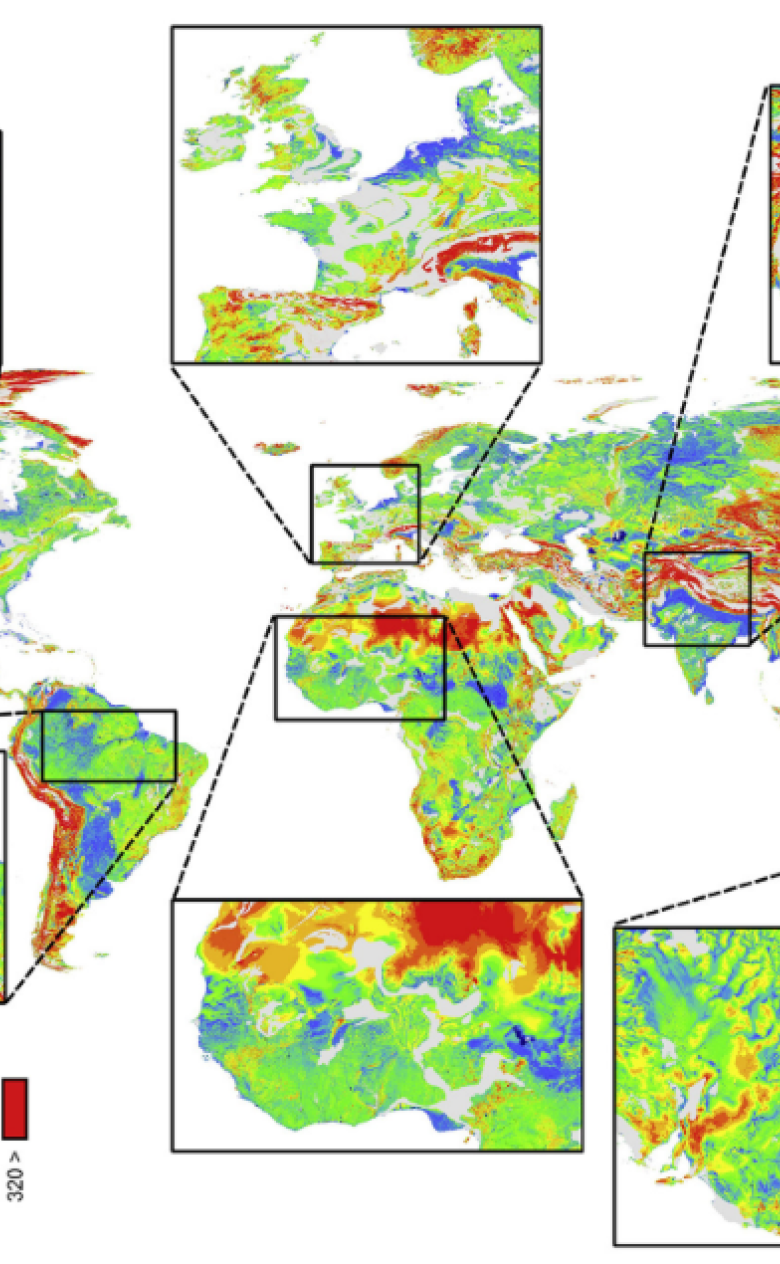The first high-resolution, time-dependent groundwater model of the world
Groundwater scientists and model developers from Utrecht University and Deltares have teamed up to make the first-ever, one-kilometre, groundwater model with global coverage. This is an important step on the road to establishing a better picture of groundwater in global water and climate models.

Although it is largely hidden from view, more than 97% of the earth’s unfrozen freshwater is stored as groundwater in underground aquifers. Groundwater plays an essential role in maintaining river discharge during dry periods and the health of wetland ecosystems. It is also the source of half of the water used for irrigation worldwide, and particularly in dry areas, where groundwater extraction usually leads to falling groundwater levels and aquifer depletion.
Newly developed model GLOBGM
Despite its importance, groundwater is not shown very clearly in the global water and climate models used to estimate the effects of climate change and socio-economic changes on water stocks. It is either not included at all, or treated simplistically. The first global groundwater models were established only recently but the level of resolution in those models is still inadequate for the correct representation of smaller aquifers and the exchange of water between groundwater and surface water.
The newly developed model GLOBGM is an important step forward in this respect because it strives to model global groundwater systems with a high spatial resolution of 30 arcseconds (~ 1 km). The computer clusters needed to run models this large do not have to be very big. Jarno Verkaik, a PhD candidate at Utrecht University and a groundwater software expert at Deltares, was responsible for making this possible.
Jarno: “I have changed the underlying model code (MODFLOW 6) in such a way that it runs efficiently in parallel on multiple processors of a computer cluster. I have applied unstructured grids to minimize the number of computational cells and associated runtime and storage. I have also applied parallel data processing which was required to handle the many terabytes of input and output data. This way we can run 60 years over night with as little computational resources as possible and makes the use of this model feasible for users that do not have access to very large computers.”
At the forefront of global groundwater modelling
The results of the global runs were compared with observations. The results were satisfactory, even without calibrating the model, and they were also found to be better than those from an earlier, coarser (~ 10 km), version of the model. "This development has put us at the forefront of global groundwater modelling," says co-author Marc Bierkens, professor of hydrology at Utrecht University. "In an elegant way, it combines the strength of Deltares in the development of modelling tools with the strength of our group’s large-scale modelling expertise and global datasets."

"And it doesn’t stop there," adds Gu Oude Essink, a groundwater expert at Deltares and visiting senior lecturer at Utrecht University. "In the future, we intend to add more geological detail and as much local data as possible, including groundwater extraction, and to include saline groundwater in coastal aquifers. In this way, we are paving the way for future global water models that will be good enough to be relevant for regional water managers."



